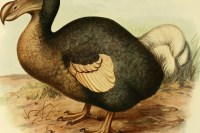‘Scatter ye rosebuds while ye may,’ sang my husband, reckless of words and tune, thereby offending the ghosts of Herrick, William Lawes and my good friend standing nonplussed on the hearthrug, who had been seeking a sympathetic ear. I really wonder if these outbursts of disinhibition indicate the onset of dementia.
My friend had been complaining that she had sent off her new book to the publisher, and that, when it came back, commas had been scattered throughout the text in a most ludicrous way. Thus when she wrote of ‘a meagre light-industrial estate’, it had been turned into ‘a meagre, light-industrial estate’, as if it might have been another kind of estate entirely and still meagre. No doubt if she had written of ‘a dirty old man’ it would have come back as ‘a dirty, old man’.
The late Michael Dummett, in his handy little book (or ‘handy, little book’) Grammar & Style for Examination Candidates and Others (1993), observed: ‘It would be hard to give rules dissolving all perplexity about whether or not to use commas to separate adjectives qualifying the same noun.’ He noted the difference between ‘the principal female instructor’ and ‘the principal, female, instructor’. In the first, the instructor is the chief among the women; in the second, she is chief among all instructors and is parenthetically a woman. This is not quite what my author friend was upset about.
Professor Dummett also noted that adjectives specifying (rather than merely supplying an additional description) stand next to the noun. So we have ‘a tame leopard’, a specific kind of leopard. If it is also beautiful, it becomes ‘a beautiful tame leopard’, with no comma. The clue is given by the order of the adjectives. We shouldn’t have written ‘a tame beautiful leopard’ in the first place. The ‘tame leopard’ is a conceptual compound qualified by ‘beautiful’. By contrast ‘a hairy, smelly dog’ could be ‘a smelly, hairy dog’.
Lord Carrington was once reported to have said of Margaret Thatcher that he didn’t want ‘any more trouble from this fucking, stupid, petit-bourgeois woman’. He later said he wouldn’t have used such language. I don’t know about the language, but the commas seem unnecessary.





Comments